Tag Agency’s ground-breaking report – ‘Spenny’ exploring how the UK cost of living crisis is impacting british youth
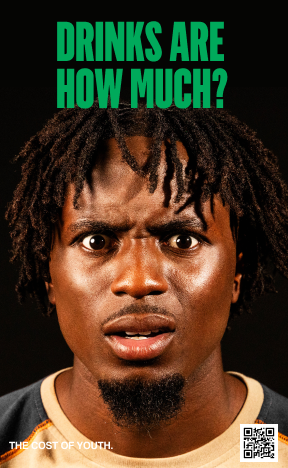

The prevailing economic climate is impacting the youth in various ways, and Tag Agency has conducted a series of examinations to gauge the impact of the ‘cost of living crisis’ on British youth.
In response to the pressing challenges posed by the UK cost of living crisis, Tag Agency has conducted a ground-breaking report delving into the intricate ways it affects British youth, specifically Gen Z. Stationed on multiple billboards across various locations in London, titled “Spenny: How the UK Cost of Living Crisis is Impacting British Youth,” presents a detailed analysis of how the rising living costs are shaping the economic landscape for young people across the country. The report, a testament to Tag’s commitment to transparency and community engagement, not only explores the economic ramifications but also investigates its influence on shopping habits, wellness, fashion and beauty, career and entrepreneurship, leisure, play, and community dynamics. Offering valuable insights into the economic factors shaping the lives of British youth and their response to these various factors.
Wellness Challenges:
The cost-of-living crisis is taking a toll on the wellness of British youth. According to a survey by the mental health charity, YoungMinds, 37% of young people aged 18-24 shared that they had experienced anxiety and 35% had experienced depression because of financial worries. Stress-related to financial insecurity is impacting mental health, leading to an increased demand for accessible mental health resources and wellness services within the community. The mass increase use of social media by this current generation is not just to consume but to feel something. To build connection and community via creators who focus more on authenticity than presenting a perfectly edited video. The interest has moved onto realism and relatability that caters to an ever-growing society that searches for escapism throughout these trying times. The continuous growth of viral pages such as @wetheurban @thenapministry points towards a societal shift regarding the value of wellness, including content such as spa days, and self-care days that remind despite the crisis, taking care of oneself is important.
• Everyday day is mental health day.
• Wellness isn’t about selling more products. It’s about holistically increasing the quality of life of the consumers and communities who make your work possible.
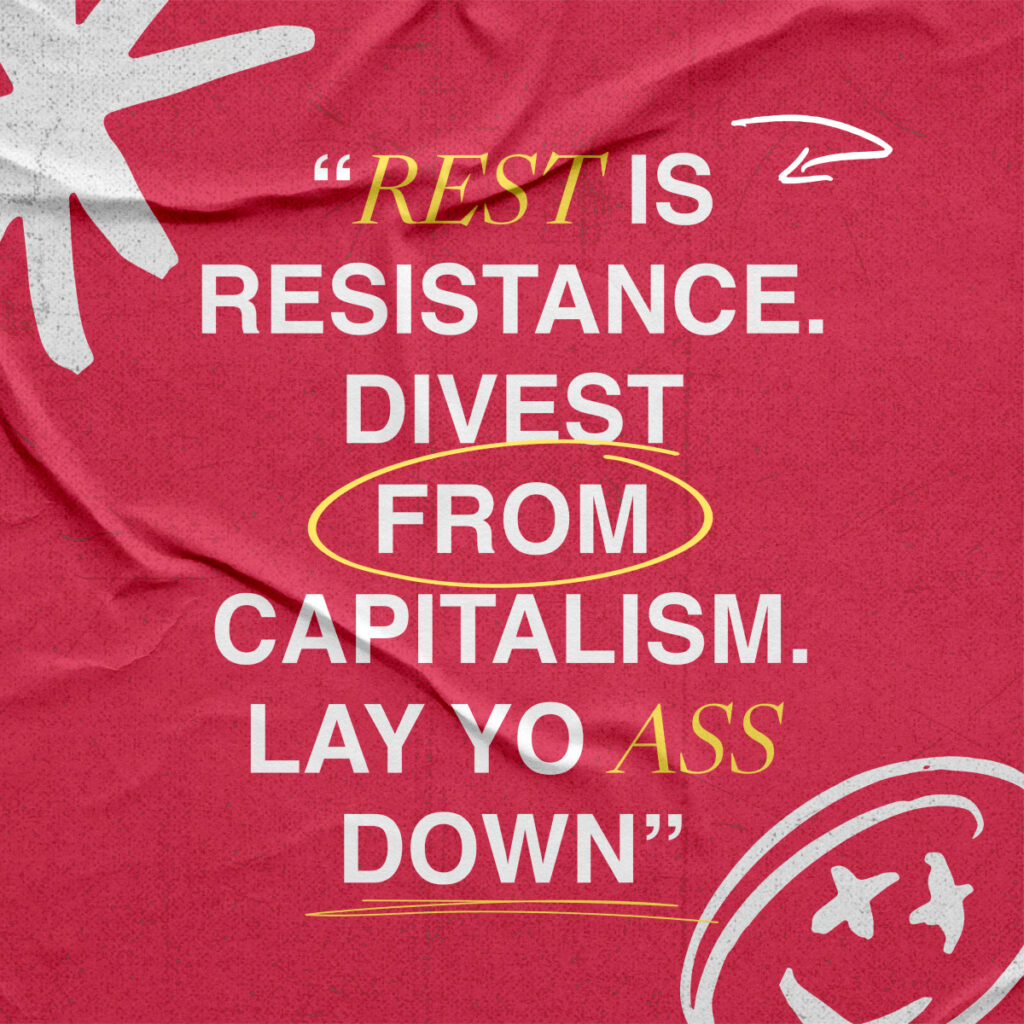

Fashion and Beauty Adjustments:
The report observes changes in the fashion and beauty landscape, with young people opting for sustainable and budget-friendly choices. The pursuit of value-driven purchases and a move towards conscious consumerism are evident trends in the face of economic constraints. The balance of enjoying fashion and makeup without building a financial limitation against oneself. The ever-changing landscape of maintaining beauty standards is a pressure felt by everyone, especially within black and brown communities. Having to maintain a monthly or by-weekly schedule for nails, hair, or eyelashes and even more intensive procedures such as Botox and fillers must now be part of their monthly budgeting regardless of the cost of living
crisis or not. Women of colour are afforded little space to always look anything but ‘presentable’ and coupled with social media’s increased demand in content creation which requires WOC to submit to the pressure of always looking beautiful. Recognizing the issues of the current financial climate and prioritizing self-care, and mental and physical health has become a staple in the daily lives of many. Understanding that beauty maintenance can be a physical manifestation of wellness goes hand in hand with alleviating the pressure of succumbing to deteriorating mental health. British youth are demonstrating a growing inclination towards budget-conscious choices, emphasizing the need for affordability and value in their purchasing decisions.
Subscribing to conscious buying such as thrift shopping/second shopping and upcycling allows for the endorphins of purchasing something new, not at the expense of your bank balance. Shopping alternatively is a cheaper way to shop but overindulgence leads to high costs. The option to DIY came about during the COVID-19 lockdown due to the lack of resources at the time. DIY offers the option of learning new skills, and starting new hobbies, but one standalone pitfall is overconsumption.
• There is a desire to learn how – how to do beauty, and how to do it yourself. • Beauty is fickle and costly. The deeply entrenched beauty standards, often archaic, keep women in a cycle of consumerism.
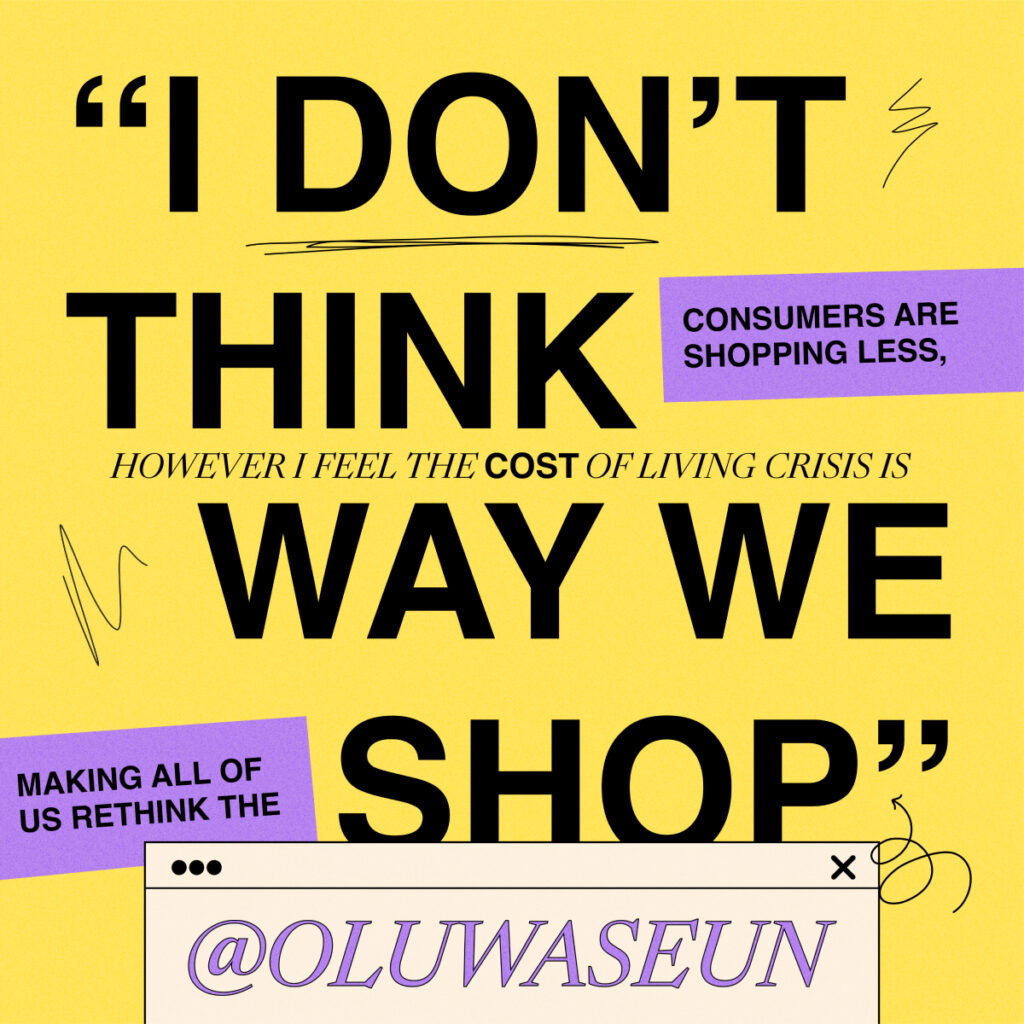

Career and Entrepreneurship Dynamics:
The cost-of-living crisis is shaping the career trajectories of British youth. Job market pressures are fostering a spirit of entrepreneurship, with young individuals seeking alternative avenues to navigate economic challenges and create opportunities for themselves. Young people are focused more on working less and slowing down the workforce. The rising costs of essential goods and services, matched with its effects on mental health means “I just want hobbies. Why would I work harder than I already do? I do not need another job”. Gen-Z is rallying against capitalism and we’re seeing a nihilistic vibe shift. They’re becoming more critical of the world they reside in, quitting their jobs, and finding alternative meanings of value. All in an attempt to live more fulfilling and ‘romantic’ lives. The COVID-19 pandemic saw a surge in innovative and exciting British-born brands that focused on providing entertainment and escapism during a troubled time. Presenting a case study on independent businesses such as Ruka Hair, No Signal, and Dankie Sounds, which were born out of moments of crisis to solve problems for diverse consumers in the UK. “A robust economy is dependent on investment in young people’s creativity.”
Case Study: Dankie Sounds is a London-based collective centered on gathering partygoers and dance lovers by creating opportunities for fellow creatives and showcasing talent within the community. Presenting an all-cast female DJ’s line-up at their first shows essentially made them pioneers and amplified the sounds of Southern Africa within the genre of Amapiano in the UK.
Case study: No Signal They offered the opportunity to celebrate culture and educate the masses whilst providing heart-filling entertainment. The lockdown of 2020 showed us what it meant to do something for the community. No Signal, through their music gameshow NS10v10, created a revolutionary way to build community and closeness by providing us with music, discussions, and the promise of events once the lockdown ended.
Identifying adjustments in leisure and play preferences among British youth where economic constraints are influencing choices towards more affordable recreational activities, emphasizing the importance of creating accessible community spaces for social engagement.
The importance of social activities and community spaces is a luxury that young people cannot afford to discard. Attending events as often or curating one at home themselves to further minimize cost has become an effective way to not sacrifice ‘enjoyment’.
• Creativity and culture thrive in stable economies. Invest in creatives and youth-led creative businesses.
• Provide resources like grant programs and capacity-building support.
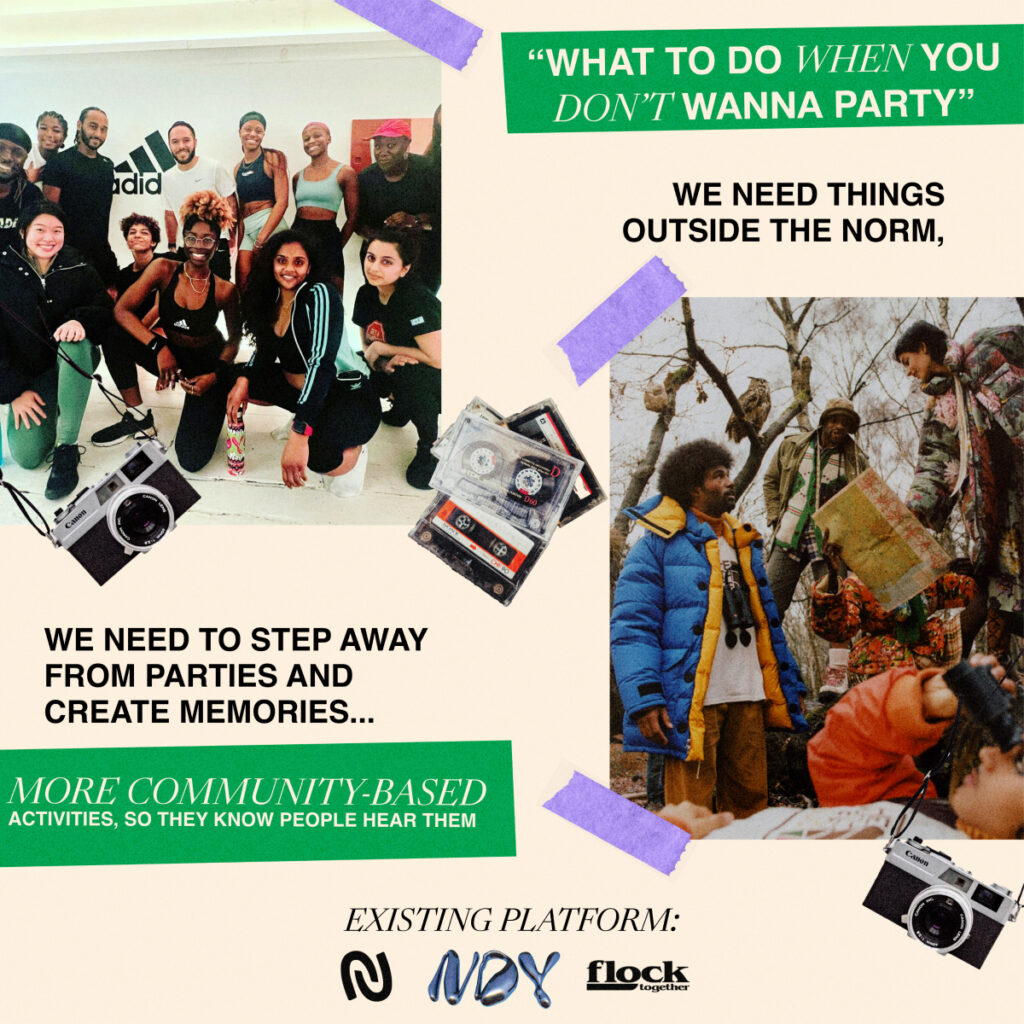

Community Impact: Fostering a sense of community encourages resilience among Gen Z. “Dating and relationships are all an investment; you have to invest to reap the rewards” Not only does the cost-of-living crisis have its effect it also has an impact on building intimacy. A cost of ‘loving’, where intimacy is becoming scarce. Analyzing the cost of dates across 30 countries shows that the average cost of a date in the UK is £100. As housing and rent continue to rise, research shows it’s cheaper to live in a couple, with friends than single. Impacting the choices young people make regarding their dating/love life and the longevity of such relationships whilst factoring all economic factors. The current economic climate shows us that engaging in the process of love is expensive which results in fewer love matches within our communities. Alternatively, realize that investing in friendships is more sustainable and cost-effective. Young people are more interested in building communities and seeking connections to reduce the effects of loneliness.
• People are being super intentional about love, critiquing it, analyzing the intersectionality of racism and love in a diverse pool.
• Communities keep people connected and resilient.
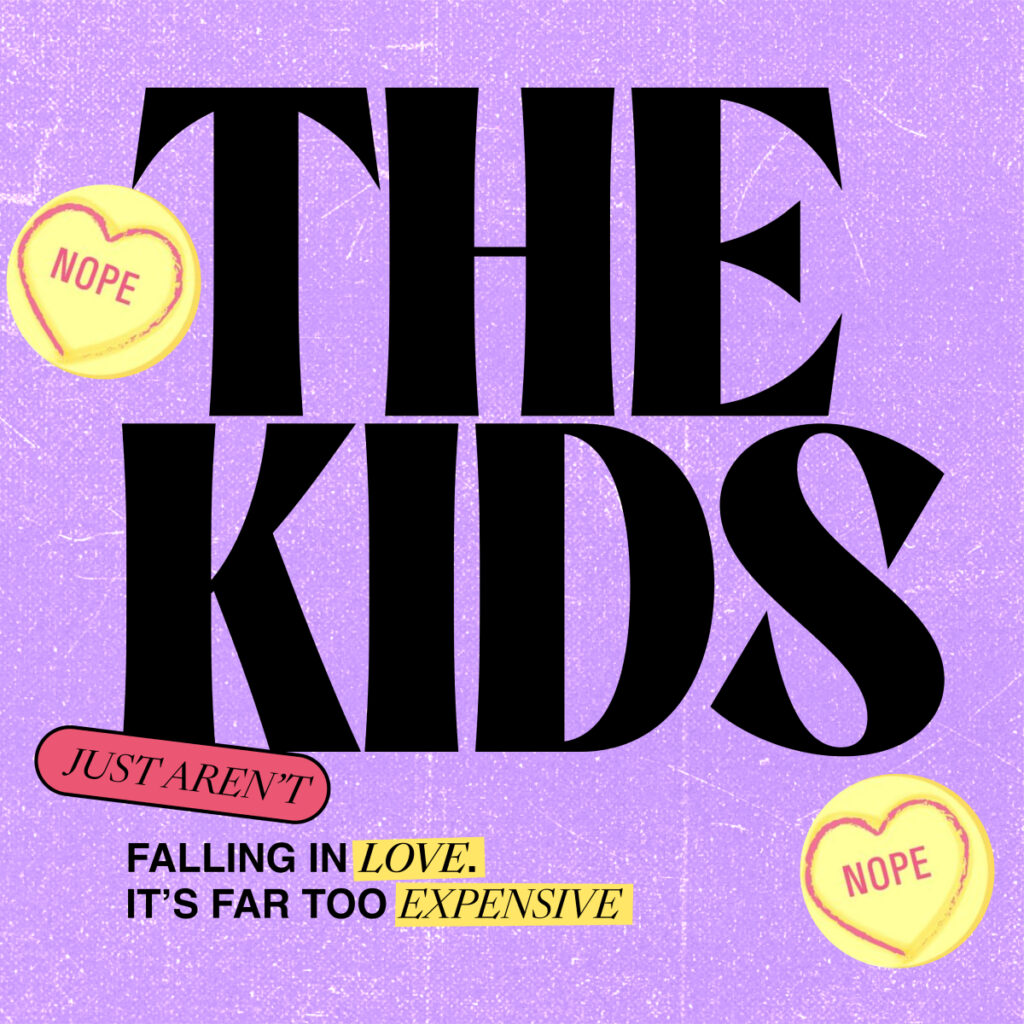

Every year Tag picks a topic they would like to bring awareness to. It is our internal passion project that allows us to discuss matters that affect young people and pay young people for their time to help us develop an idea. We’ve done previous projects for COVID-19 and the Black Lives Matter Movement. The current Cost of Living crisis felt essential and pressing to discuss, and we felt brands weren’t acknowledging its effects on their consumers, especially Gen-Z. This report was created in stages.
- To collect insights: we held a creative focus group in the form of a mood board workshop with over 80 young people in attendance.
- To analyse the data: we worked with 15 young people to determine the best output, and that’s how the report and billboard campaign were born.
From this study, there are multiple things we hope it does. Firstly, we’ve created a resource bank for young people to use; it’s filled with things we hope could be beneficial during the cost-of-living crisis. Secondly, we hope to bring awareness in a light-hearted approach and lastly, we hope that it provides and acts as a guide to brands, stakeholders, and decision-makers on how they can communicate effectively with young people during the cost of living. This current economic crisis does not seem to be going anywhere and young people will continue to shop, engage, and turn to their favourite brands for guidance. However, the question is how are these brands showing up and ensuring young people are at an afterthought during making decisions?
Britain looks completely different now compared to 50 years ago, and decision-makers and policymakers don’t essentially look, or sound like us. People with influence have a duty to provide young people a platform to share their stories so they feel acknowledged, seen and heard. The work we do may not change a policy yet but it’s a starting point to bring awareness for change in the future. Leadership looks different to everyone but at Tag, it’s about us putting the young people at the forefront and letting them share what matters.
Billboard Assets Locations:
- London Stadium
- Camden – Grays Inn Road
- Wandsworth – Queenstown Road/Ravenet Street
- Shepherd’s Bush





![ZINO VINCI’S ‘FILTHY & DISGUSTING’EP BRINGS YOU TO THE CORE OF THE ARTIST [@ZinoVinci]](https://guap.co/wp-content/uploads/2023/10/Zino-4.jpg)





![Remel London’s [@Remel_London] “Mainstream” is a must attend for upcoming presenters!](https://guap.co/wp-content/uploads/2017/02/REMEL-LONDON-FLYER-FINAL-YELLOW-COMPLETE-1.png)